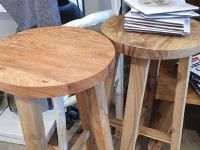How to Feed and Fertilise
A 6 minute read by Peter Worsp
Trees and shrubs will survive satisfactorily with little or no feeding. However, if they are fed, especially in the first year or two, they will thrive. Fruits, vegetables and flowers definitely respond to feeding, resulting in much more pleasure and satisfaction from your efforts. This article will assist you to choose the right fertiliser and advise where and when to use it.
Hint – remember that plants and fertiliser are like people and food – a little and often suits best.
Nutrients Required for Growth
To be healthy and thriving plants require a balance of nutrients (although members of the protea family and some NZ natives require only small amounts). Some soils, in particular sandy soils, require more fertiliser than clay soils.
The major elements required for plant growth are Nitrogen (N), Phosphorus (P) and Potassium (K). These are required in large amounts. Fertilisers which contain these three are sometimes referred to as NPK fertilisers (or complete fertilisers) and the percentage of each is referred to as the NPK content. A good NPK or complete fertiliser for plants in pots is likely to contain a ratio of 10%N, 4%P and 8%K, while one for application to soils may contain a ratio of 6%N, 5%P, 5%K.
Fertilisers high in potash (the symbol K on the bag) are for flowering and fruiting plants such as roses and fruit bushes.
Fertilisers high in nitrogen (symbol N) are good for leaf growth e.g. vegetables and lawns.
In addition to the major elements, minor and trace elements are required. These trace elements are required by plants in very small amounts. In most soils these are available naturally in adequate amounts. However, they could be deficient in pot or container plants after a year or so.
Occasionally minor or trace element deficiencies show up in plants. Where this is suspected, bring a sample in to our garden adviser.
Soil Acidity
The acidity of soil has an effect on availability of elements required for growth. Plants grow best in soils that are slightly acid. Fortunately most soils naturally fall in this band. Organic soils high in compost may be more acid and some chalk soils or clays may be too alkaline. If most of your plants fail to thrive and acidity is suspected seek advice from our garden adviser.
There are a few plants such as azaleas, camellias, rhododendron, daphne and boronia, along with lawns, which prefer an acid soil.
Very acid soils are improved by adding lime. Alkaline soils are improved by adding compost, sulphate of iron or sulphur.
Which Fertiliser to Use
Which fertiliser to use depends mostly on where the plant is growing, (in the soil or in a pot) and whether the application is at planting time or a top dressing later to established plants.
At planting time trees, shrubs, roses, etc.
- iCan Slow Food 24 month controlled release fertiliser
- Novatec
When applied at planting time, these fertilisers release the nutrients over a 9 - 24 month period, which gives plants a very good start. Because they release slowly, they are safe to use around the roots at planting time.
For top dressing existing gardens, trees, shrubs, roses and fruit trees
- Use Tui General Garden Fertiliser, Rose, Citrus, Acid, or Lawn as appropriate
- An alternative is sheep pellets, Nitrophoska Blue
For vegetable garden and flower beds
- Use Tui General Garden or Vege Fertiliser - Mix this into the soil prior to planting
- An alternative and also very good as a top dressing is Nitrophoska Blue. Nitrophoska Blue is approximately 2.5 times more concentrated and is therefore used more sparingly
Pots and containers - all plants
- Use Novatec
- ICan Slow Food
- Tui Pro Grade Pots & Container Fertiliser
Lawns
-
Apply Tui Lawn Food three or four times a year. Be careful to apply evenly to avoid burning and temporary brown patches. Another product to use may be Burnetts EasyFert Slowe Slow release fertiliser
House plants - all plants
- KiwiCare Houseplant Fertiliser
- Thrive Houseplant Food
Liquid Feeding
Liquid feeding of plants is useful for giving plants an extra boost. It is particularly effective for plants which are lacking thrift or recovering from a shock e.g. at transplanting time for seedlings, or for boosting yields e.g tomatoes. Liquid feeding should be repeated 4 or 5 times at 2 weekly intervals. Good liquid feeds are iCan Fast Food, Yates Thrive and Nitrosol.
Organic manures
These are usually based on animal manure and in addition to supplying nutrients, they have a beneficial effect on soil structure.
Rooster Booster, iCan Real Blood & Bone, sheep pellets.
Lime
There are three types of lime
- Garden lime contains calcium carbonate
- Dolomite lime contains a mix of calcium carbonate and magnesium carbonate
- Gypsum is calcium sulphate
Garden lime and dolomite lime are both alkaline and are used to
- Condition clay soils
- Reduce acidity
- Provide calcium
- Improve the availability of phosphate in the soil
Gypsum is neutral and is used to
- Condition clay soils
- Provide calcium
- Improve the availability of phosphate in the soil.
- Being neutral it does not affect acidity
Gardens benefit from an annual dressing of lime dolomite or gypsum. It improves the condition of clay soils and improves the availability of phosphate. This means that the other fertilisers applied will work better. However don’t over apply. Excess dolomite application can lead to an over alkaline soil which suppresses potassium and other nutrients.
Use gypsum rather than lime or dolomite on acid loving plants such as azalea, camellias, rhododendrons and lawns.
Gypsum is a better safer alternative unless the soil is known to be acid.




